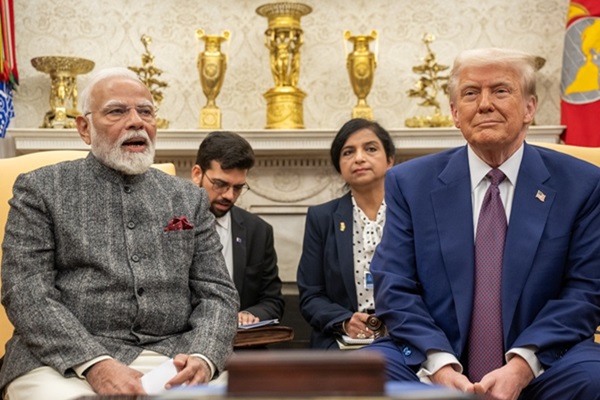.png)
US Entry To Test India’s Diplomacy, Studied Neutrality
The world stands closer to a World War III–type confrontation than at any point in decades with the US and Israel attacking Iran, China and Russia backing Tehran, and Pakistan quietly aligning with Washington. For India, this is a moment of high stakes.


Ajay Srivastava, founder of Global Trade Research Initiative, is an ex-Indian Trade Service officer with expertise in WTO and FTA negotiations.
June 22, 2025 at 8:03 AM IST
The escalating conflict in the West Asia, triggered by US airstrikes on Iranian nuclear sites today, has pushed the Gulf region to the brink, threatening India’s vital energy supplies, trade routes, and regional interests.
China and Russia have moved swiftly to offer diplomatic backing to Iran. Both powers have stopped short of providing direct military aid but remain deeply invested in Tehran, economically, diplomatically, and strategically. China maintains long-term energy, infrastructure, and military-technology partnerships with Iran, while Russia’s strategic cooperation treaty signed in January 2025 signals a deepening geopolitical alignment.
While Beijing and Moscow currently avoid direct military confrontation with Washington, their diplomatic posture has raised global concerns. With the US and Israel pitted against Iran, and China and Russia standing firmly in Tehran’s corner, the current situation is the closest the world has come in decades to a World War III–type confrontation. In a region critical to global energy supplies and trade routes, the risk of escalation, through design or miscalculation, has rarely been higher.
For New Delhi, the stakes could not be greater. India enjoys deep historical, cultural, and economic ties with Iran, once a major oil and gas supplier, and views Iran’s Chabahar Port as a strategic gateway to Afghanistan and Central Asia, providing crucial connectivity while bypassing Pakistan. Yet India also maintains robust relations with the US, Israel, and Gulf Arab states, each now directly or indirectly involved in the unfolding confrontation.
A key concern is the potential disruption to the Strait of Hormuz, through which roughly 60–65% of India’s crude imports transit. Any blockade or military escalation in this vital maritime corridor would severely impact India’s energy security, drive up oil prices, and trigger inflationary pressures at home.
At present, the immediate impact on bilateral trade with Iran and Israel remains modest—amounting to $1.2 billion in exports and $441.8 million in imports with Iran, and $2.1 billion in exports and $1.6 billion in imports with Israel. But a wider regional escalation could threaten India’s much larger trade with the broader West Asian region—including Iraq, Jordan, Lebanon, Syria, and Yemen—where Indian exports total $8.6 billion and imports stand at $33.1 billion.
Any disruption to shipping lanes, port access, or financial systems in this corridor would severely impact India’s trade flows, inflate freight and insurance costs, and introduce fresh supply chain risks for Indian businesses.
China-Russia Moves
The emerging postures of China and Russia could further complicate India’s diplomatic calculations. A deeper China-Iran military nexus could jeopardise New Delhi’s strategic investments in Iran—particularly Chabahar Port, and force an uncomfortable realignment of its West Asia policy.
Pakistan’s positioning also warrants close scrutiny. Islamabad’s tacit neutrality, or quiet alignment with US objectives, could strengthen US–Pakistan ties, potentially diluting Washington’s strategic engagement with India. Conversely, reduced Iranian-Pakistani cooperation could afford India greater latitude to pursue its own connectivity initiatives in Iran.
In this volatile environment, Indian policymakers are expected to maintain a stance of studied neutrality, eschewing overt alignments, pushing for de-escalation through the UN and other multilateral channels, and sustaining back-channel diplomacy with Washington, Tehran, Tel Aviv, Moscow, and Beijing. The overarching aim: to protect India’s vital interests—energy security, regional trade, and strategic autonomy—while avoiding entanglement in great-power rivalries.
In today’s fractured world, survival depends on balancing, not choosing sides. For India, this will remain the guiding principle as this crisis unfolds.



